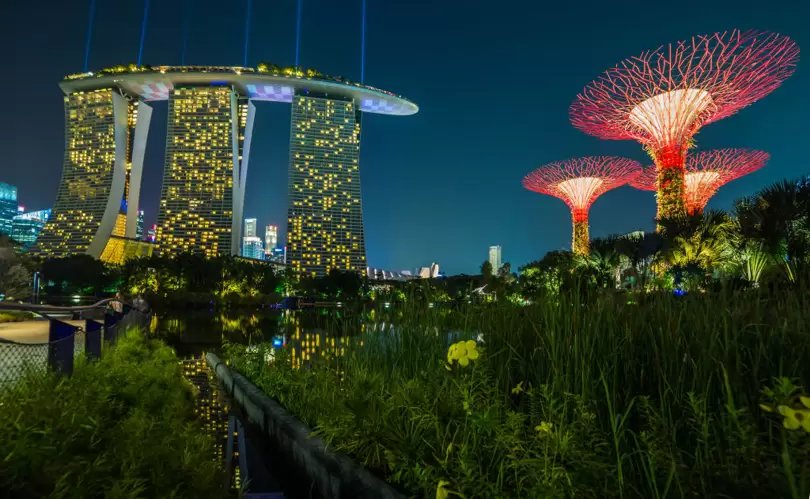
Tim Bowen from onestopenglish created a Guardian Weekly lesson on How to Get Cars out of Cities.
With one of my groups, we never got past the warmer question that asked us to put a list of six cities into a ranking order of ‘greenness’. The discussion triggered by this task was about why these cities had made the list, who had come up with the ranking and, most importantly, what were the criteria for being considered a green city.
The internet does provide many articles (and rankings) of this sort. They all display different lists, though with some overlap – Copenhagen always seems to make the top three. Two articles I personally liked were from the Guardian: Where is the Greenest City and Which is the Greenest City in the World from travel.earth.
The Guardian article offers a link to (what seems to be) a scientific paper from the journal Ecological Indicators that introduces 33 criteria for assessing the eco-friendliness of Chinese cities (see below).
From: ELITE cities: A low-carbon eco-city evaluation tool for China
Abstract
China is pursuing the development of low-carbon eco-cities to limit carbon dioxide and other greenhouse gases emissions; however, it is unclear what constitutes a low-carbon eco-city and how to evaluate it. The eco and low-carbon indicator tool for evaluating cities (ELITE cities) was developed by researchers at the Lawrence Berkeley National Laboratory in 2012 to evaluate cities’ performance by comparing them against benchmark performance goals as well as rank them against other cities in China.
To be honest, if you want to pursue this topic, all you need to do is enter ‘greenest city of the world’ into your search engine and loads of pages pop up. My group seemed to have been right in their skeptism: from Tim Bowens’s list we found only Copenhagen on other lists; I later found an article describing why London also ranks high, the one I shared above.
Also interesting is a look at images; it’s amazing what kind of architecture you see, very science fictiony at times for someone who lives in a German village 😉
Eventually I found that the wikipedia entry The Sustainable City provides the most existensive and satisfactory text on the topic with many links to further sources.
The article describes various areas in which change of practices can lead to more sustainabililty and eco-friendliness of cities.To give just a few examples:
- Create agricultural plots within cities fo reduce distances food has to travel. This means supporting small-scale farming. Check Urban agriculture;
- Increase renewable energy sources, e.g. solar panels and biogas created from sewage to name just two;
- Methods to decrease the need for air conditioning: planting of trees, light colored surfaces, water features, more green spaces, green roofs, decrease of tarmac and asphalt i.e. reducing individual car use – all measures to decrease the ‘heat island effect’ of cities. (Also check Angel Hsu’s TED talk on how cities are driving climate change and what we can do to fix it);
- Improved zero-emission public transport, increased pedestrianization, better bike lane networks;
- Decrease urban sprawl by ‘seeking new ways of allowing people to live closer to the workplace’ (the mention of home-office as an alternative for commuters is missing here, but should be mentioned as a solution for lowering emissions short term).
A lot of sustainability ideas, concepts and projects evolve around architecture, but seemingly less obvious aspects as social equity also play a role in creating not just more sustainable cities but generally more livable environments. Coming from a poor background often implies lack of means for more environmentally sustainable choices with the additional negative impact on lower income families’ health:
Environmental injustice refers to the unequal distribution of risk to environmental threats, with vulnerable populations – e.g., people of low- and middle-income (LMI) and people of color (POC) – experiencing the greatest exposure and least protection.[46] Environmental injustice is pervasive and manifests in many ways, from contaminated drinking water to mold-infested housing stock.[47] One example of environmental injustice is the varying burden of heat exposure on different racial and socioeconomic groups.
from: wikipedia sustainable cities: social equity
To come back to the original point of discussion above – which city is the greenest: The attempt at a ranking of green cities maybe creates a wrong focus. In the end it is not important to find out if there is a winner or to come up with a scientifically proven top ten; in the end the only thing important is that cities try to implement as many of the suggested measures as possible to turn cities into places people like to live in. Because I strongly believe that an environmentally friendly and sustainable environment is also a more livable one.
